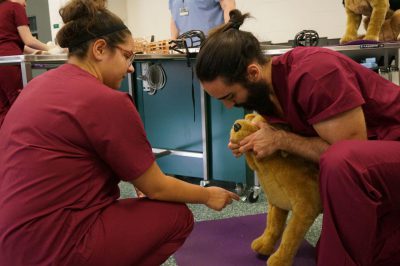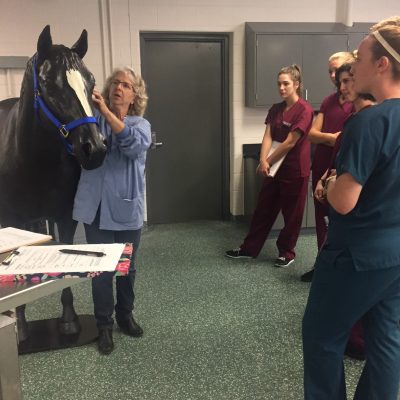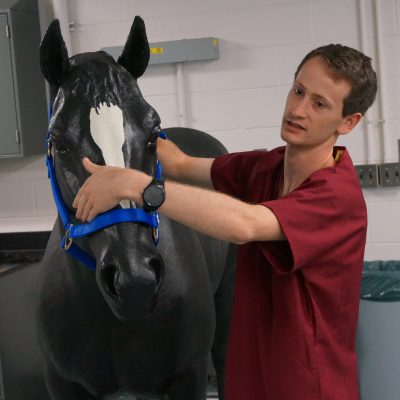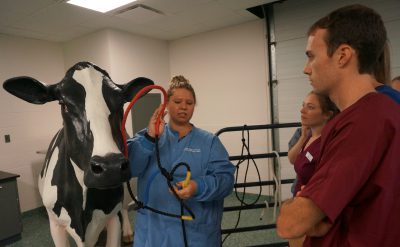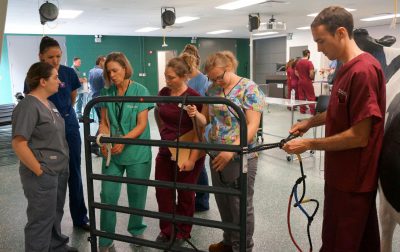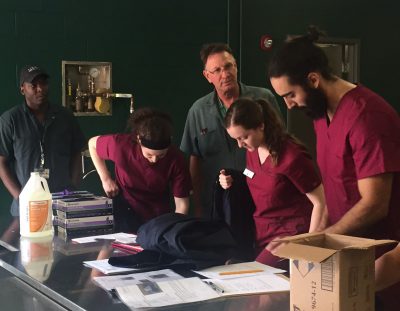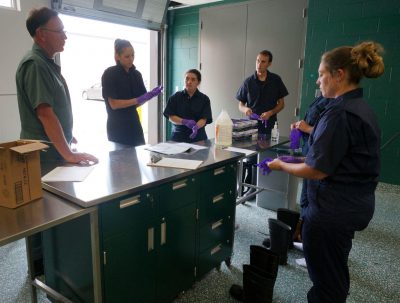In the new LeBlanc Clinical Skills Lab, housed in the Mary Anne McPhail Equine Performance Center, DVM students learn and practice critical skills on simulation models before working with live animals. Later in their coursework, the students will use these models to practice skills, such as injections, drawing blood, suturing, assisting with calf delivery, equine colic, and other skills. But at the start of their first year, these students are using the models to learn and practice the basics of approaching, handling, and restraining animals.
Janice Swanson, PhD, professor for the College's Department of Large Animal Clinical Sciences, believes practicing in a stress-free environment will set the students up for success when they begin working with live animals by helping take nervousness and fear out of the equation.
“It de-couples the fear of learning a new skill from the fear of working with a live—and possibly, rather large—animal they may not have worked with before," Swanson says. "They get to build muscle memory, giving them confidence and competence before working with live animals."

